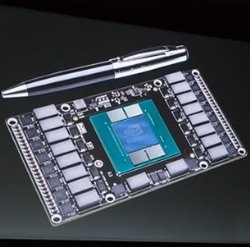Leaks and Rumors
A few days ago we published an article that covered a leaked batch of emails that showed Kaspersky has worked with the Russian Government. We also covered that the pieces of the emails that were published were completely out of context, and also are nothing out of the ordinary for a company that has a contract with a Government body. Kaspersky's denial of cooperation is also nothing new, so why the big deal in the media? Well we might have found a few pieces to that puzzle which would certainly explain the big push to discredit Kaspersky.
- Details
- By Sean Kalinich
- Hits: 7680
Yesterday we talked about the possibility that AMD will launch a Dual-GPU R9 Fury X card geared for 4k and VR. This is certainly welcome news for most AMD fans and for fans of virtual reality. It was no coincidence that the first time we are seeing this in operation was at a big VR event in LA or that the launch is rumored to coincide with the launch of Oculus and HTC’s Vive headsets. This move would be a very high-end AMD card on the market around April/May of this year.
- Details
- By Sean Kalinich
- Hits: 9470
Read more: Rumors say NVIDIA might launch Pascal in April...
Around 2013, AMD entered into an extended partnership with a group of companies to create the Heterogeneous Systems Architecture Foundation. These companies mostly ARM licensees and included Samsung, MediaTek, Texas Instruments (Ti), AMD, Imagination, Qualcomm, and even ARM themselves. The group was similar in nature to the one that AMD had with Motorola and Ti back before the Athlon processor came into existence. The partners were all working on technology and resource sharing to make programing for devices simpler. We also saw it as a chance for AMD to offset R&D costs and potentially enter into some beneficial agreements.
- Details
- By Sean Kalinich
- Hits: 9130
Last week there was an announcement by Global Foundries that they were licensing Samsung’s 14nm FinFET process for their own use. This immediately started the internet going with talk about how AMD would be using this new process despite there not being any indication that AMD was ready for 14nm for APUs, CPUs, or GPUs for that matter. Now, in true internet fashion the rumor mill has shifted from AMD to NVIDIA. The claim is that NVIDIA will soon utilize Samsung’s 14nm FinFET tech too.
- Details
- By Sean Kalinich
- Hits: 9847
Read more: Rumors that NVIDIA is moving to Samsung's 14nm...
Well it seems that Microsoft is tired of being the brunt of jokes about slow internet browsing, compatibility and… well just about everything else. If the rumors are to be believed they are going to strip down the render engine for IE 12 and push out two versions with Windows 10. The much leaner version will remove all of the bloat needed for backwards IE compatibility and focus on being a real standards based browser.
- Details
- By Sean Kalinich
- Hits: 10702
More Articles …
Page 1 of 11





